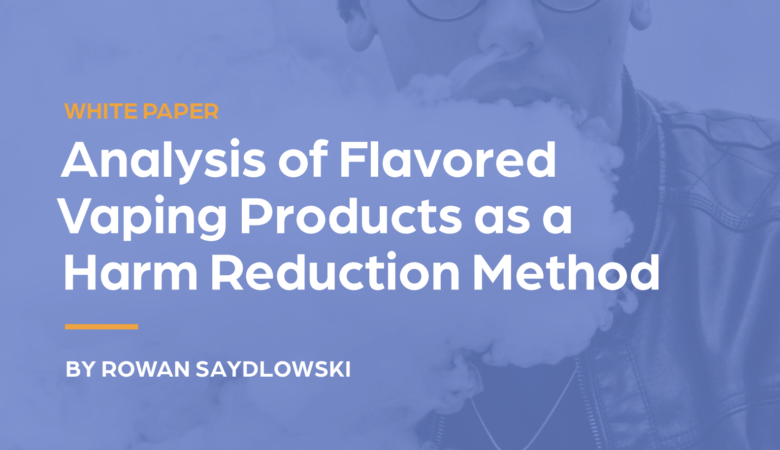Tholos, PRA Publish White Paper on the Role of Flavored Vaping Products in Tobacco Harm Reduction
WASHINGTON, DC –– 5/20/2022 –– On Friday the Tholos Foundation and Property Rights Alliance published a new white paper titled “Analysis of Flavored Vaping Products as a Harm Reduction Method,” as a follow-up to last year’s report Vaping Works. International Best Practices: United Kingdom, New Zealand, France and Canada.
The Tholos Foundation is a 501(c)3 educational foundation that conducts research and education on effective public policy from a free-market perspective. Property Rights Alliance (PRA) is an international research and advocacy project committed to promoting and protecting innovation and intellectual and physical property rights. Strong legal and political environments that recognize and enforce property rights preserve the tangible and intangible assets of inventors while incentivizing innovation.
“This addendum report summarizes the key benefits of flavored vaping accessibility for achieving harm reduction, and the unintended dangers that can accompany well-intentioned bans of these products,” writes PRA Fellow Rowan Saydlowski in the white paper. “By following the recommendations outlined in this report, governments may be best prepared to tackle the important issue of tobacco and nicotine harm reduction.”
Evidence has shown that countries which embrace vaping witness decreases in smoking rates that are twice as fast as the global average. Vaping Works showed this to be the case in the United Kingdom, New Zealand, Canada and France. According to recent Ipsos research cited in the new white paper, in several European countries 80-90% of vapers find flavors – especially fruit flavors – to be a crucial factor in quitting combustible cigarettes and staying away from smoking.
“A study published in the academic journal Nicotine & Tobacco Research in 2021 measured quit rates among smokers across four countries (Australia, Canada, England, and the United States) who also used nicotine vaping products,” the paper explains. “The researchers found that smokers who used vaping products with ‘sweet flavors’ were 44% more likely to quit smoking cigarettes than those who vaped tobacco flavors. 48% of vapers who quit smoking ended up quitting vaping within two years as well.”
However, flavor bans are a live issue in Europe. Denmark and Estonia have banned all flavors except tobacco and menthol; Finland and Lithuania have banned all flavors except tobacco; and Hungary and Ukraine have banned flavors altogether. Similar bans have been proposed in Latvia, Netherlands, Norway, and Sweden, among others.
Beyond the fact that flavor bans deter current smokers from switching to a less risky alternative, flavor bans could lead to significant negative consequences, such as pushing vapers back to smoking, to the black market, or to mix their own liquids. Some of these scenarios have already materialized in Estonia and Hungary.
As explained in the paper, “A recent international study by University of Waterloo’s Shannon Gravely et al. which asked current vapers what they would do if flavors were banned in their country found that 17% of vapers would switch to smoking instead, while over 28% would seek out an alternative way to obtain their preferred flavors. Additional consumer surveys have shown that in some countries discussing flavor bans, as many as 50-60% of vapers consider these scenarios.”
The paper notes that according to data gathered by Ipsos in Estonia, where flavors were banned in 2020, “[a]lmost 60% of Estonian vapers reported using banned flavors in April 2022, with the overwhelming majority of those coming from the black market or being mixed at home.”
The white paper “Analysis of Flavored Vaping Products as a Harm Reduction Method” proposes alternative solutions that research shows are backed by over 80% of vapers. These alternatives include stricter enforcement of existing laws (in traditional retail and online), education campaigns and even, in some cases, restricting flavors to adult-only retail channels. These solutions are already used in the United Kingdom and New Zealand, among others.
The full white paper can be found here.
###

